In late October, I visited 766 Valencia Street in San Francisco, arriving amid a light rainstorm. The Mission smelled fresh that morning, and there was no indication that a bomb cyclone and an atmospheric river were about to collide and pummel the city. Curator and artist Shirin Makaremi met me on the sidewalk with a smile and a big hug, the kind of greeting many of us have deeply missed in the touch-starved 18 months of quarantine. I was there to talk with her and three other administrators of Incline Gallery, an art space that has not only survived a fire and the pandemic-fueled economic downturn, but is poised to support the art community as recovery continues.
Incline Gallery, SF’s Most Architecturally Unique Artist-Run Space, is Back
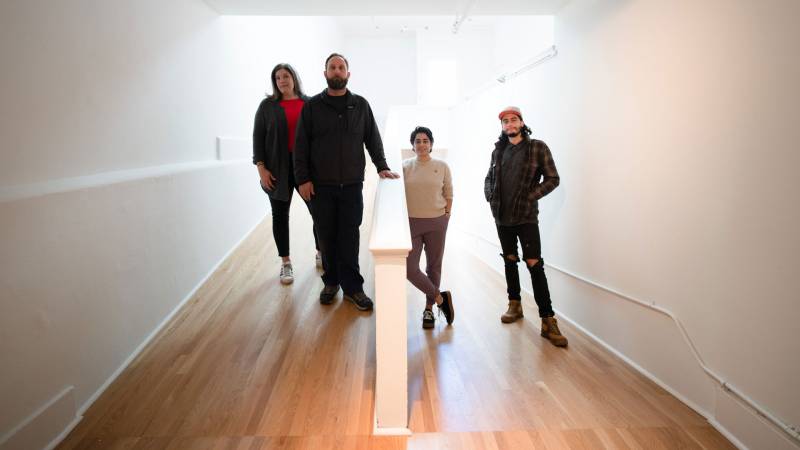
Visitors know there’s something special going on as soon as they make the journey down a narrow hallway off of Valencia and through the Incline’s front door. This gallery is different from any other art space in San Francisco, even in a city of unusually laid-out parcels, pop-up spaces and apartment galleries. This is because Incline was once a mortuary, one of many in the neighborhood, a reminder of a different cultural and economic moment in the city’s history. In its former use, the gallery’s three staggered ramps made it easier to move human remains on gurneys to and from the second-floor embalming room.
Sean Quigley, the building’s master tenant and co-founder of the eclectic gift shop Paxton’s Gate, placed a Craigslist ad announcing the ramps were available as gallery space in 2009. When asked via email why he rented to gallery founders Brian Perrin and Christo Oropeza, who met as art students at San Francisco State University, Quigley says he was impressed by their artwork and their willingness to rehabilitate the building’s dated interior. The gallery officially opened in 2010, and eventually earned sustaining financial support through sources including Southern Exposure’s Alternative Exposure grant program.
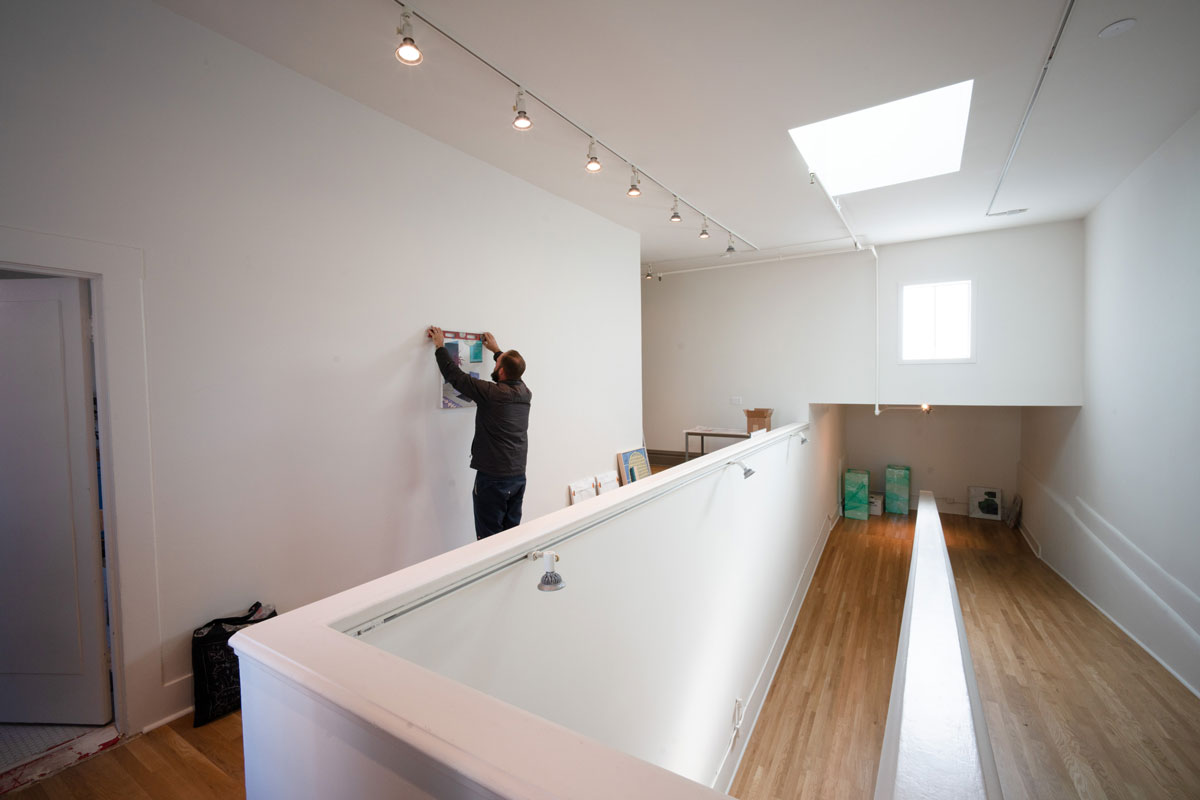
Architecture that fuels artistic experiments
The ramps pose a unique installation challenge for curators and artists, but they also create opportunities for experimentation. Incline Gallery’s last show before the pandemic hit, Kimberley Acebo Arteche’s solo exhibition The Curved Body of a Pixel, used the spacing (and pacing) of the ramps to create a sense of anticipation. Curator Lian Ladia and Arteche staged large framed photographs in isolation on the gallery landings, guiding audiences along a set viewing path.
The exhibition, which broadly examined technology’s effect on identity and familial relationships, included a triptych of woven photo-objects hung on the wall above the final ramp. On the approach, viewers had to look up to see the objects, and it wasn’t until one arrived on the topmost landing that the images were fully visible. This curatorial strategy effectively forced viewers to look up to the trio of diminutive Pinay matriarchs featured in the photo-objects, affording a regal stature to subjects rarely seen in Western art contexts.
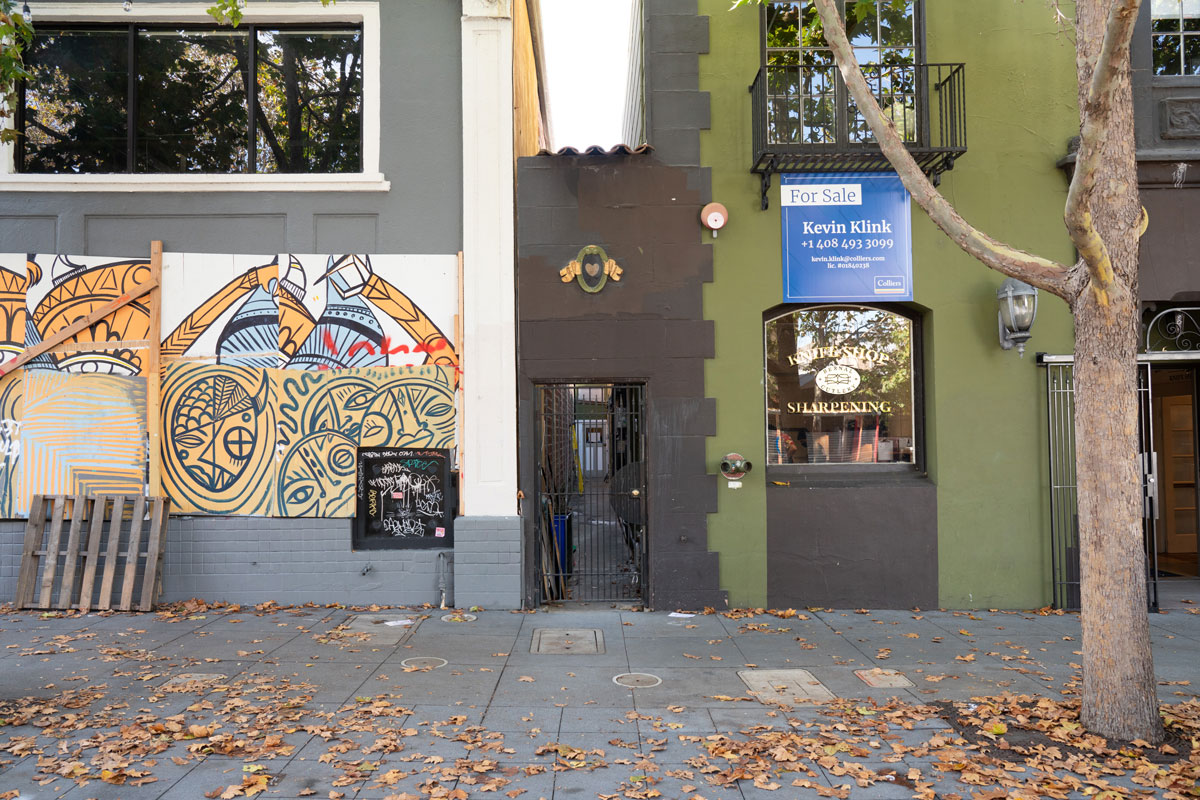
The Incline Gallery crew all have memories of the creative ways artists have tackled the lack of right angles. “One exhibition that comes to mind for all of us,” notes co-founder Brian Perrin “is each rock a course love,” a 2018 show which included four handmade rakes, three custom plinths, and six tons of gravel. Artists Melissa Wyman and Michael Namkung filled the gallery with about two inches of gravel throughout, placing irregular-shaped plinths on each landing to mimic the rocks in a Japanese rock garden; the rakes allowed visitors to trace winding paths through the loose stones.
“Melissa and Michael both have very physical art practices,” Perrin says. “It was really amazing to watch them bring the gravel into the space load by load until there was a complete transformation.”
Since 2010, Incline Gallery has hosted over 69 exhibitions, and while all of the proposed projects have been realized, at least one required curators and artists to resort to a plan B. Home, a show curated by Kristi Holohan from Rock Paper Scissors Collective, involved an artist who creates tiny moveable tiny houses. “I thought I had measured every door and hallway,” Perrin remembers, “but I missed one and when he brought the house we couldn’t physically get it into the gallery.”
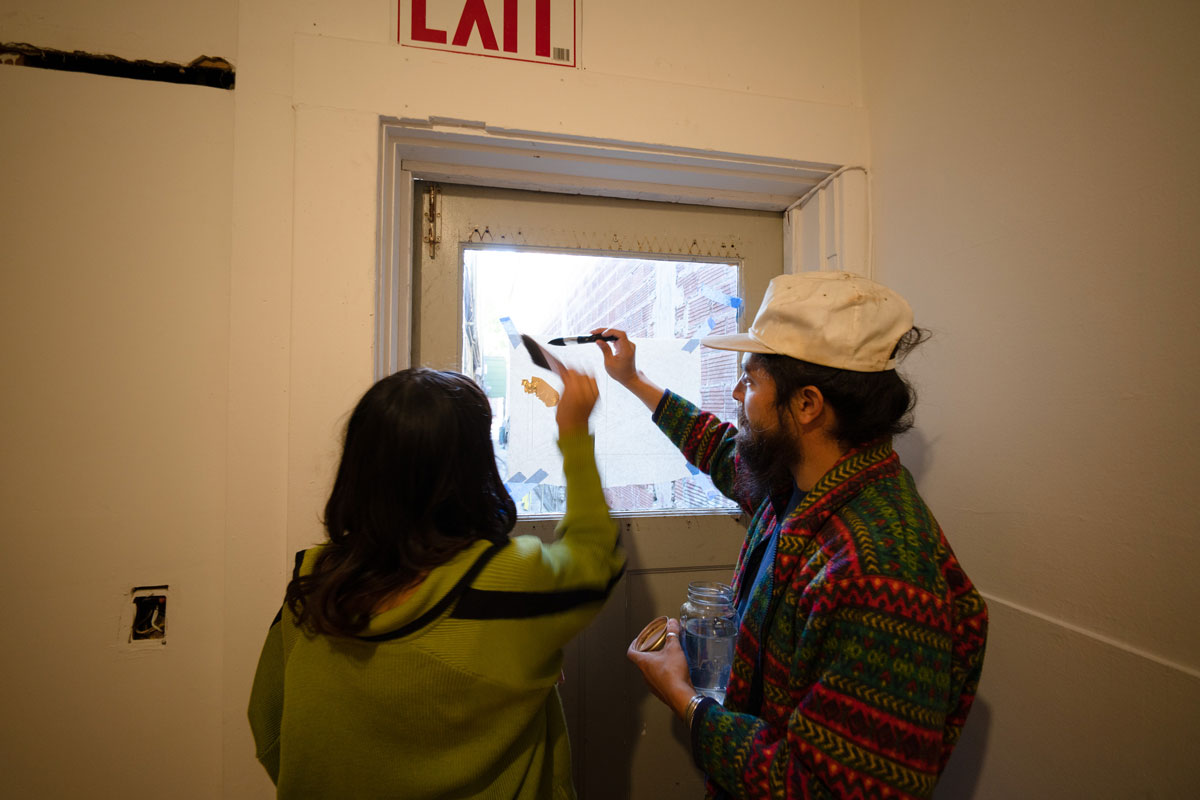
A long-awaited reopening
On the day of my visit, Makaremi was joined by her newly appointed co-director Mary K. Powers, along with Perrin and (by phone) Oropeza; both Perrin and Oropeza remain involved as co-founders. The group was reflective, fielding my questions with humor and evident joy at simply seeing each other in person. They discussed how the 2008 economic downturn provided unexpected preparation for navigating all the challenges that 2020 delivered. While the group is rightfully giddy about the work of 19 local artists in their 11th anniversary show (opening Nov. 6, 12–8pm), their joy is noticeably tempered by thoughts of the pandemic’s rippling effects throughout the art community, and before that, the fire that nearly spelled the end of the gallery.
Early in the morning of Dec. 8, 2019, a fire ignited in a top-floor electrical outlet. While no one was injured, and the burn damage was comparatively minimal, extensive smoke and water damage required them to close the space until repairs could be made. Shortly after that, as COVID-19 rendered everything uncertain, it was unclear if or when Incline Gallery would open again.
Fortunately, the pandemic-mandated closure in March 2020 and eventual support from the Paycheck Protection Program support coupled with existing insurance payouts gave the team extra time to make the necessary repairs, and prepare for what comes next. Makaremi adds that Perrin, whose carpentry skills made all the difference as he and Oropeza prepared to open the gallery in 2010, was also involved in repairing the space after the fire. “It’s been so special to have Brian be a huge part of the rebuilding of the gallery from the state it was after fire,” she says.
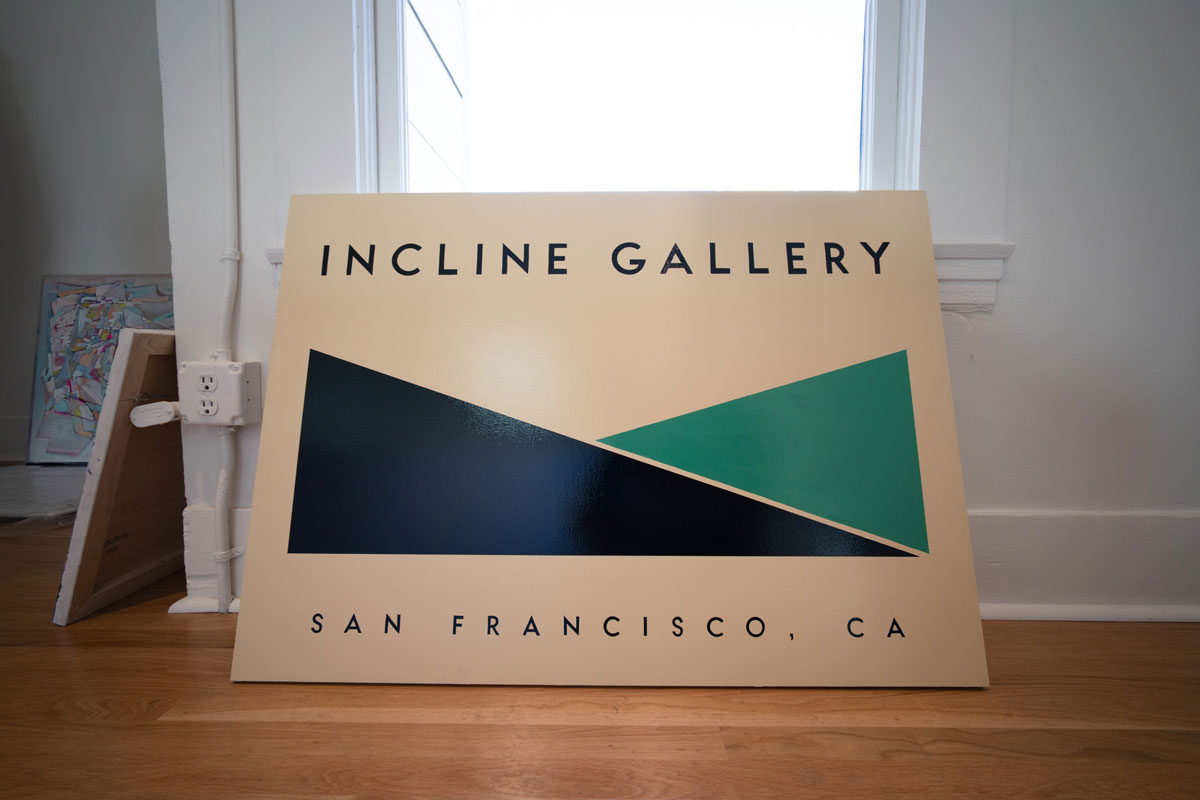
Listening to the four gallery administrators riff off of and build conversationally on each other’s ideas and hopes for the space as they celebrate 11 years of existence, my mind returned to an earlier conversation with Perrin and Oropeza. On the verge of their fifth anniversary in 2015, I interviewed the founders for the online publication Temporary Art Review. When asked what motivated them to open a gallery, without hesitation, both expressed a desire to support their community: showing work that wouldn’t receive attention from other local institutions, engaging curators who are eager to see their exhibition-making ideas realized, and most importantly, encouraging their fellow artists to sustain creative practices while also making financial ends meet in the Bay Area.
That striving, or as Oropeza noted poetically as our conversation wrapped up, “weaving a web that is strong enough to cradle, and elastic enough to launch artists,” is a reason to be hopeful. In its next chapter, Incline Gallery is positioned to take its place alongside other longstanding artist-lead institutions, including Galería de la Raza, and SF Camerawork—spaces that have helped make the Bay Area a home for artists.

